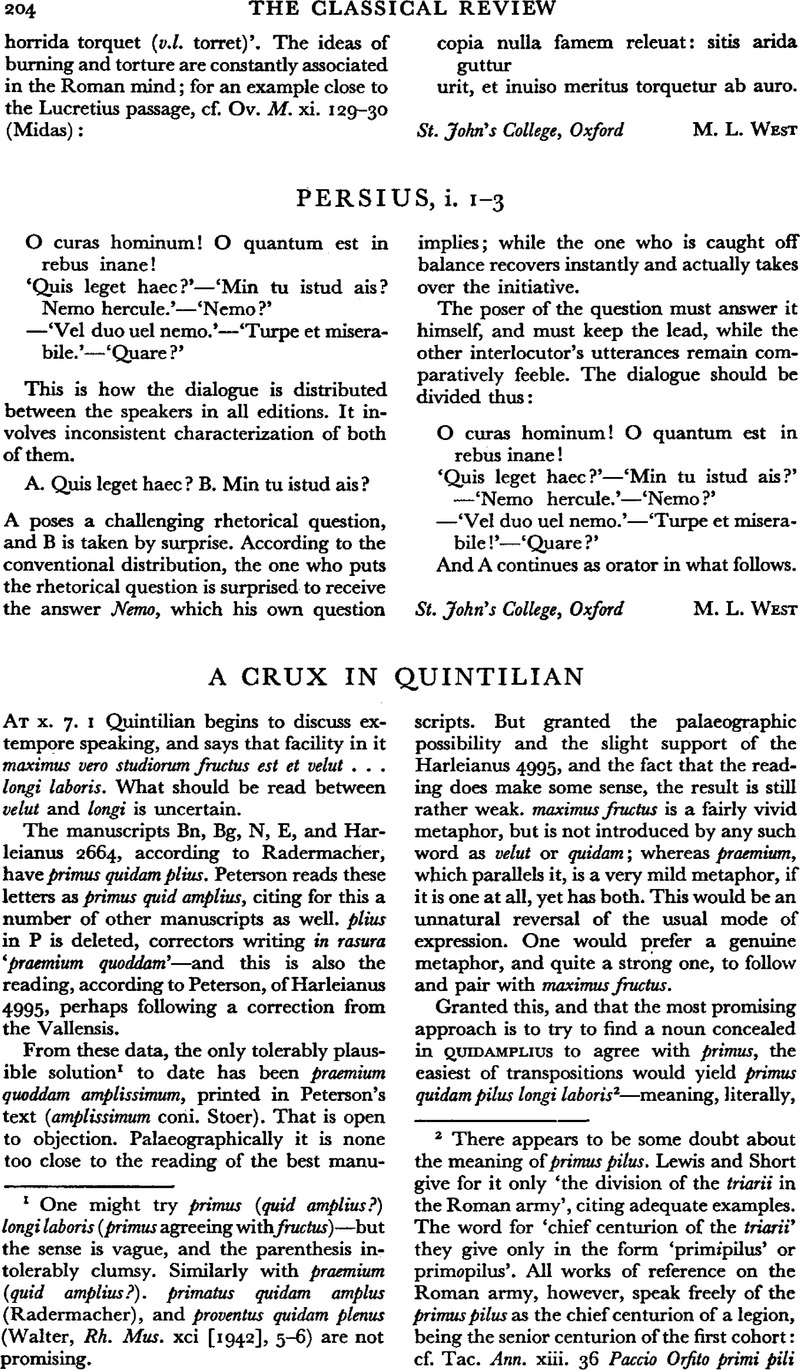No CrossRef data available.
Published online by Cambridge University Press: 27 February 2009

page 204 note 1 One might try primus (quid amplius?) longi laboris (primus agreeing with fructus)—but the senseis vague, and the parenthesis intolerably clumsy. Similarly with praemium (quid amplius?). primatus quidam amplus (Radermacher), and proventus quidam plenus (Walter, Rh. Mus. xci [1942], 5–6) are not promising.
page 204 note 2 There appears to be some doubt about the meaning of primus pilus. Lewis and Short give for it only ‘the division of the triarii in the Roman army’, citing adequate examples. The wordfor ‘chief centurion of the triarii’ they give only in the form ‘primtpilus’ or primopilus'. All works of referenceon the Roman army, however, speak freely of the primus pilus as the chief centurion of a legion, being the senior centurion of the first cohort: cf. Tac. Ann. xiii. 36 Paccio Orfito primi pili honore perfancto. The second meaning would here enhance the metaphor; the first—‘veteran soldier’—mutatis mutandis, would not detract much from it.
page 205 note 1 e.g. in Book x alone: I.29; I.31; I.33; I.79; 3.3; 5.15; 5.17; cf. Cic. de Orat. i.71; iii. 83; Or. 42, 228–9; Tac. Dial. 34, 37 fin.
page 205 note 2 labor is commonly used of the rigours of the military life.
page 205 note 3 Another interpretation might compare the rank or insignia of the officer to the facility in extempore speaking, which would be the sign of the high-ranking, experienced orator—but it seems that primus pilus is invariably used elsewhere of die officer himself, not his insignia. The nearest approach to this might be Tac. Ann. xiii. 36, quoted on p. 204, note 2.
I should add my thanks to Professor I. M. Campbell for reading first draftsof this note, and for helpful criticism.